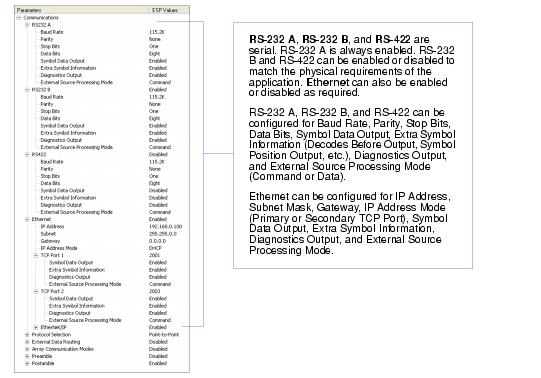

 
|
Port Routing
The physical advantages created by flexible signal routing and switching are enhanced further by Port Routing, which can be configured in ESP. Port Routing eliminates the need for dedicated "Host" and "Aux" ports in a traditional sense. With Port Routing, any port can be defined as a Host or Aux port. Port Routing also allows users to define the data types that are accessible from specific ports.
The primary benefit of Port Routing is that any type of data can be routed to any port, and can be sent through multiple ports simultaneously. Multiple types of data can also be appended to the symbol data that is output from the scanner to the host. Command data, symbol data, extra symbol information, and diagnostic data are enabled by default in the QX-870.
The table below lists different types of data, with examples for each data type.
The screen capture below (from ESP) shows the QX-870's four communications ports and the parameters for each.

 
|